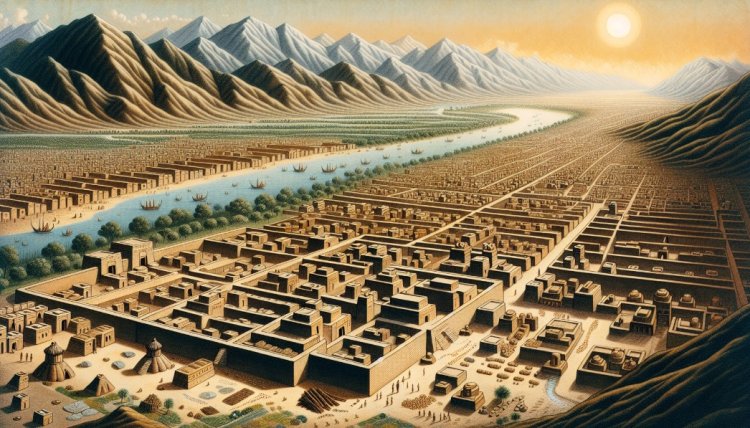The Mystery and Innovation of the Indus Valley Civilization
Unravel the Indus Valley's enigmatic past! Dive into the mysteries of its advanced cities, undeciphered script, and groundbreaking innovations. Discover a lost civilization that still whispers secrets to the present.

Introduction
Have you ever pondered the nature of existence in the realm of one of mankind's oldest civilizations? Step into the captivating realm of the Indus Valley Civilization. Our expedition began in 1856, when industrious railroad workers in British India accidentally stumbled upon strange bricks. What they didn't know was that they had accidentally stumbled upon the remains of a bygone civilization—a civilization that flourished at a time when pyramids were just a figment of an Egyptian pharaoh's imagination. This was the birthplace of the fascinating Indus Valley Civilization.
The flourishing society
In the gentle embrace of the Indus and Gagar Hakra rivers in what is now Pakistan and northwest India, the Indus Valley Civilization flourished magnificently during the mature Harappan phase, which lasted from about 2600 to 1900 BC. During this period, the civilization flourished and developed into one of the most remarkable societies of the ancient world.
Imagine a society so sophisticated that it had carefully planned urban centers even before the chronicles were written. The streets are carefully arranged in a grid-like formation and adorned with houses made of uniformly fired bricks. Each house has its own well and a sophisticated sewage system. These were not the disorganized, haphazard settlements of other ancient civilizations, but carefully planned urban centers.
Economic efficiency
The inhabitants of the Indus Valley were not only exceptional in urban planning but also possessed a keen acumen in trade. The existence of a standardized system of weights and measures is an indication of a sophisticated and advanced economic structure. Goods from the Indus Valley were discovered in distant lands such as Mesopotamia, suggesting an extensive trade network that spanned continents.
Peaceful harmony
Significantly, this civilization had a remarkable propensity for tranquility.In contrast to other ancient civilizations, there are hardly any traces of war or social strife. The tranquil atmosphere, coupled with the highly developed urban development and economic success, paints a captivating picture of a prosperous and harmonious society.
FAQ
Q: How advanced was the Indus Valley Civilization?
The Indus Valley Civilization was truly ahead of its time with its impressive urban planning and economic system.
Q: What made the Indus Valley Civilization unique?
The Indus Valley Civilization was characterized by its well-planned cities, sophisticated economic system, and peaceful society.
Q: What led to the decline of the Indus Valley Civilization?
The fall of the Indus Valley civilization remains a mystery. Theories range from natural disasters to internal conflicts.
The legacy
Despite its demise, the Indus Valley Civilization has left a lasting impression in the annals of human history. The impact of this phenomenon is evident in the rich diversity of cultures and traditions that adorn the Indian subcontinent, while the principles of urban planning persist as a source of inspiration for contemporary urban designs.
Conclusion
The Indus Valley Civilization was not simply an ancient society but a highly developed one that surpassed its time. The rise, prosperity, decline, and enduring legacy of this society captivate our curiosity and invite us to unravel its mysteries. When contemplating the intricacies of urban planning or the prosperity of a community, it is worth remembering the enigmatic Indus Valley Civilization, an ancient society that continues to captivate our collective curiosity today.



 admin
admin 










